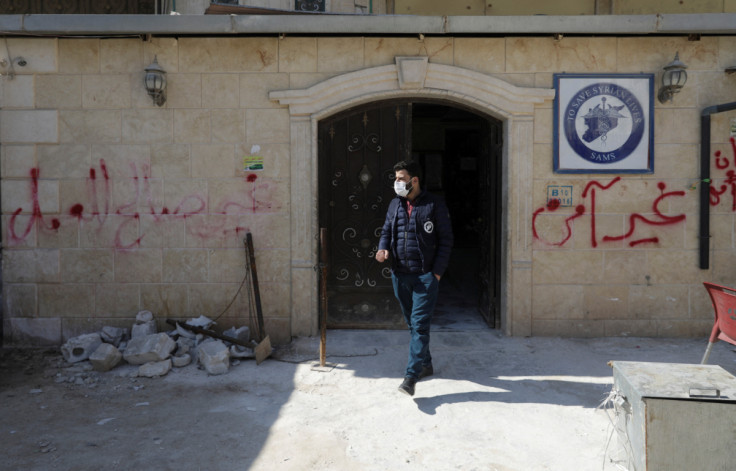Quake Deals New Blow To Syrian Medics After Years Of War

As a nurse working near the frontlines of the Syrian war, Ibrahim Zeidan endured many desperate moments including when shelling destroyed a hospital, leaving him trapped by rubble.
But he says an earthquake which hit the region on Feb. 6 has proved the most difficult challenge yet for medics in the rebel-held region, overwhelming health facilities already battered by more than a decade of conflict.
The night of the disaster, Zeidan oversaw the evacuation of infants from the hospital where he was working in the town of al-Dana. CCTV footage from the hospital showed masonry falling and equipment shaking as the quake struck.
"We had children on oxygen, so we couldn't provide for them nor find an available place, as all hospitals were full," said Zeidan, 33, describing how the children in intensive care were loaded into a car and driven off to other hospitals.
"The earthquake was the hardest thing we have ever experienced because everything was lost - electricity, oxygen, the heating for the children," he said in an interview at a hospital in al-Qah, where he has been working since the quake.
More than 4,500 people have been reported killed and 8,300 people injured by the earthquake in northwest Syria, according to the United Nations - the bulk of the casualties reported from Syria, a country fractured by civil war since 2011.
Hospitals in the rebel-held northwest have been shelled repeatedly in the war: in 2019, more than 60 medical facilities were struck in a six-month period in the northwest Idlib area, and appeared to have been deliberately targeted by government-affiliated forces, a U.N. rights spokesman said at the time.
Zeidan previously worked at a hospital that operated out of a cave in the Kafr Zeita region of the rebel-held northwest.
Known as the "cave hospital", it was hit repeatedly. Zeidan said he left that hospital in 2018 as government forces were close to capturing the area. The Syrian government has denied hitting civilian targets such as hospitals.
CRACKED WALLS
The hospital at al-Dana emerged from the ruins of another health facility that was shelled in the conflict.
It was established with staff and equipment transferred from the hospital in the town of Atarib, which was badly damaged in 2020 during a government military campaign, said Ayman Al Hussein, the medical coordinator.
"The first moments following the earthquake were catastrophic, as it was full of patients and medical personnel," Hussein said.
"All the patients were discharged to nearby hospitals."
The hospital at al-Dana has been empty since the earthquake.
The words "Unsafe" and "Unfit for work" have been painted in red next the entrance. Cracked walls and piles of masonry point to the power of the earthquake.
"There are walls that need to be removed completely ... much of the equipment is out of operation, especially the operating theatre," he said.
Until the quake, the hospital - which is supported by the Syrian American Medical Society (SAMS) - had been serving a region with a population of some 600,000 people, and around 750 babies a month are delivered there, said Hussein.
The biggest challenge was that the hospital would be out of operation for a month for repairs, he said. "This will cause more pressure on the surrounding hospitals."
(Writing by Tom Perry; Editing by Nick Macfie)




© Copyright Thomson Reuters 2024. All rights reserved.





















